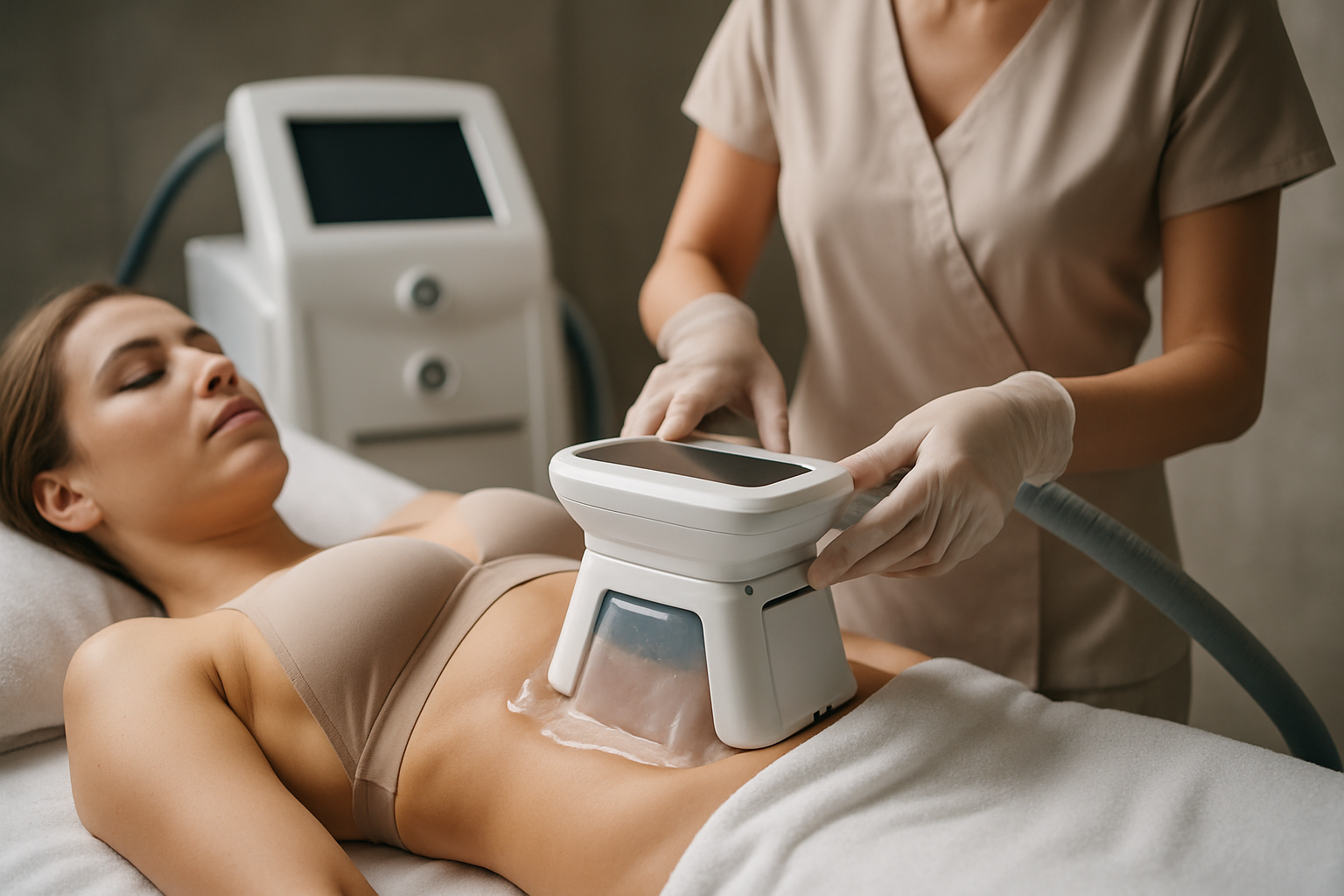Cryolipolysis: Sculpting Bodies Through Cold Therapy
In the ever-evolving landscape of body contouring, a revolutionary technique has emerged, promising to freeze away stubborn fat without the need for invasive surgery. Cryolipolysis, also known as "fat freezing," has captured the attention of beauty enthusiasts and fitness aficionados alike. This innovative procedure harnesses the power of controlled cooling to target and eliminate unwanted fat cells, offering a non-surgical alternative to traditional liposuction. As the demand for non-invasive body sculpting methods continues to rise, cryolipolysis has positioned itself at the forefront of the industry, challenging conventional approaches to fat reduction and reshaping our understanding of body transformation.

The concept of using cold to target fat cells was first observed in children who developed dimples in their cheeks after eating popsicles. This phenomenon, known as “popsicle panniculitis,” inspired researchers to explore the potential of cold-induced fat reduction. In 2008, the first cryolipolysis device was approved by the FDA for fat reduction, marking the beginning of a new era in non-invasive body contouring.
The Cryolipolysis Procedure
A typical cryolipolysis session begins with a consultation to determine the areas of concern and assess the patient’s suitability for the treatment. During the procedure, a gel pad is applied to the targeted area to protect the skin. The cryolipolysis applicator is then placed on the treatment site, using suction to draw the fatty tissue between two cooling panels.
The cooling process lasts between 35 to 60 minutes, depending on the area being treated. Patients often report feeling intense cold initially, followed by numbness as the area becomes desensitized. Many individuals find the treatment comfortable enough to read, work on their laptops, or even nap during the session.
After the treatment, the area is briefly massaged to help break up the crystallized fat cells and enhance the body’s natural elimination process. Patients can typically return to their normal activities immediately after the procedure, with no downtime required.
Efficacy and Results
Clinical studies have shown that cryolipolysis can reduce fat in treated areas by up to 25% after a single session. However, it’s important to note that results are not immediate. The body gradually eliminates the damaged fat cells over a period of 1 to 3 months, with optimal results typically visible after 2 to 3 months.
The effectiveness of cryolipolysis varies among individuals, depending on factors such as age, body composition, and the area being treated. Multiple sessions may be recommended for more significant fat reduction or to target multiple areas of the body.
One of the key advantages of cryolipolysis is its ability to produce natural-looking results. Unlike surgical procedures that can sometimes result in an uneven or artificial appearance, cryolipolysis gradually reduces fat in a way that mimics natural weight loss, leading to a more subtle and harmonious body contour.
Safety and Side Effects
Cryolipolysis is generally considered a safe procedure with minimal side effects. The most common temporary side effects include redness, swelling, bruising, and numbness in the treated area. These typically resolve within a few days to weeks after treatment.
While rare, more serious complications such as paradoxical adipose hyperplasia (PAH) have been reported. PAH is a condition where the treated area becomes larger rather than smaller, occurring in less than 1% of cases. It’s important for patients to be aware of this potential risk and to discuss it with their healthcare provider before undergoing treatment.
Market Impact and Industry Trends
The introduction of cryolipolysis has significantly impacted the beauty and fitness industry, offering a middle ground between non-invasive treatments like topical creams and surgical procedures like liposuction. According to market research, the global non-invasive fat reduction market, which includes cryolipolysis, is projected to reach $1.6 billion by 2025, with a compound annual growth rate of 16.5%.
This growth is driven by several factors, including increasing consumer demand for non-surgical body contouring options, advancements in technology leading to improved results, and a growing emphasis on physical appearance in social media-driven culture.
The success of cryolipolysis has also spurred innovation in the field, with companies developing new applicators designed to treat different areas of the body more effectively. For example, specialized applicators have been created to target smaller areas like double chins or to treat larger zones like the abdomen more efficiently.
The Future of Cryolipolysis
As research in cryolipolysis continues, the technology is expected to evolve further. Scientists are exploring ways to enhance the fat-reduction effects, potentially by combining cryolipolysis with other treatments such as radiofrequency or ultrasound therapy.
Moreover, researchers are investigating the potential of cryolipolysis beyond aesthetic applications. Some studies suggest that the targeted reduction of visceral fat through cryolipolysis could have metabolic benefits, potentially opening up new avenues for treating obesity-related health conditions.
The rise of cryolipolysis has also prompted discussions about body image and the ethics of non-invasive body modification. As these treatments become more accessible and mainstream, it’s crucial to consider their psychological impact and ensure that they are used responsibly and ethically.
In conclusion, cryolipolysis represents a significant advancement in the field of non-invasive body contouring. By offering a safe, effective alternative to surgical fat reduction, it has transformed the landscape of beauty and fitness treatments. As the technology continues to evolve and our understanding of its long-term effects grows, cryolipolysis is poised to play an increasingly important role in shaping the future of body transformation and self-care practices.





